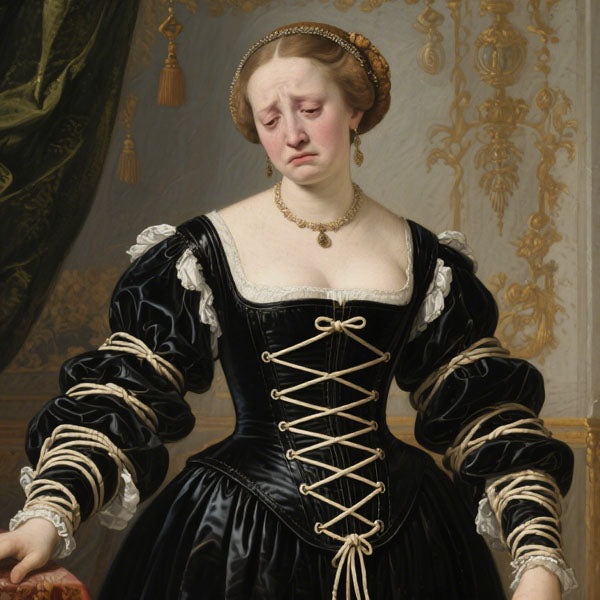The Evolution of Underwear: How VRCÔMFY Carries Forward the Spirit of Freedom

From Confinement to Awakening: The Struggle for Bodily Sovereignty in Undergarments
In 15th-century European courts, a corset made of 20 whale bones and 140 laces was a standard accessory for noblewomen to display their status. As described by historian Hao Sang, the dark silk corset exerted mechanical force to forcefully compress abdominal fat, creating the ideal “full bust, narrow waist” silhouette. However, this came at the cost of chest compression, increased cardiac strain, and even the risk of infertility and uterine prolapse. This distorted aesthetic that prioritized beauty over health finally faced resistance in the 18th century—doctors criticized corsets for “causing species degeneration,” while feminist Ursula bluntly stated, “I am first and foremost a woman, and I have the right to dress strongly, comfortably, and joyfully.” At this point, underwear was no longer merely clothing but a battlefield for bodily sovereignty. The philosophy of “comfort is freedom” that VRCÔMFY upholds today took root in this earliest resistance against restraint.
The Relay of Innovators: How the Bra Rewrote Underwear History
When French designer Paul Poiret declared in 1907 that “the decline of corsets and the rise of bras,” he likely did not anticipate that this innovation would spark a century-long wave of change. Henry's “symmetrical spherical bust cover” in 1859, the Boston tailor's “bust support” in 1870, and Mary Jacob's “backless bra” in 1914—each step peeled away constraints: replacing whalebone with elastic fabric, and adapting to the body's natural shape rather than forcing it into a rigid form. In 1930, Warner's A, B, C, and D cup system was the first to scientifically define “fit,” shifting underwear from “reshaping the body” to “respecting the body.” This revolutionary force is the very essence of VRCÔMFY's spirit—just as the courage to abandon whalebone once was, the brand continues to push boundaries today: using microfiber and ultra-elastic fabrics to make support and comfort no longer mutually exclusive.
From fashion symbol to everyday necessity: the diverse evolution of the bra
Throughout the 20th century, the bra underwent constant transformation amid controversy and admiration. In the 1950s, Marilyn Monroe's voluptuous curves popularized designs emphasizing bust contours. The 1960s saw the emergence of the “anti-bra movement” driven by rebellious ideals. The 1980s witnessed the debut of the “magic bra,” which sparked such frenzy that it required bulletproof car escorts and sparked mass-scale抢购. However, regardless of changing trends, “comfort” has always been the underlying theme. In 1997, the introduction of DuPont's ultra-elastic fibers enabled silicone bras to provide “breast relief” while preventing accidental exposure; VRCÔMFY takes this a step further: it does not follow a single aesthetic, but instead offers inclusive sizing to accommodate diverse body types, using moisture-wicking, breathable fabrics suitable for various scenarios such as the workplace, childcare, and sports — because modern women's underwear should no longer be chosen “for others' eyes,” but “for one's own comfort.”
VRCÔMFY: Making comfort the ultimate form of freedom
From the 140 straps of a corset to VRCÔMFY's seamless fit, the evolution of underwear is fundamentally about women's ongoing pursuit of “freedom to be oneself.” When Boileau prophesied the “bra era under the guise of freedom,” he may have envisioned a future where underwear could both enhance curves and liberate breathing; where it could adapt to any occasion without compromising bodily comfort. What VRCÔMFY does is condense a century of innovation into every stitch—using ergonomic design to eliminate pressure, and technological fabrics to balance support and softness. When every woman wears it, she is reminded that the ultimate purpose of underwear is never to create perfection, but to allow you to be yourself with ease. This is the most vivid interpretation of Ursula's “right to exist as a woman.”


